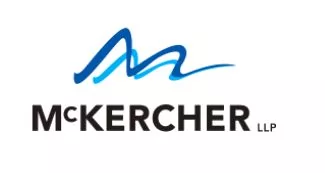On February 5, 2019, the Canadian cryptocurrency exchange, Quadriga Fintech Solutions Corp. ("QuadrigaCX"), and its related companies, were granted CCAA creditor protection. Within months, QuadrigaCX was assigned into bankruptcy on April 15, 2019. The trustee in bankruptcy has yet to declare or distribute a dividend to the affected creditors of QuadrigaCX, who are largely the users of the cryptocurrency exchange platform. It was estimated that over 17,000 affected creditors were owed cash and cryptocurrency cumulatively valued at approximately $290 million Canadian dollars as of the date of bankruptcy.
While the bankruptcy proceeding has still not concluded, there are several takeaways from the CCAA and bankruptcy proceeding that will serve to be useful in future cryptocurrency exchange and other bankruptcies.
- The Court may exercise their discretion to appoint a representative creditors committee and legal counsel for the committee once the cryptocurrency exchange enters CCAA or bankruptcy
The Supreme Court of Nova Scotia was asked by affected creditors early on in the CCAA proceedings to consider appointing both a representative creditors committee and legal counsel for the committee. The affected creditors agreed that these orders should be granted but disputed who should be appointed. While the appointment of a representative committee and its legal counsel is not new in insolvency proceedings, additional commentary given by the Court on this process could be of assistance in subsequent proceedings.
The Court exercised its discretion under section 11 of the Companies' Creditors Arrangement Act to order a representative committee and legal counsel for the committee be appointed. The rationale for doing so was: (1) to provide effective communication; and (2) to bring increased efficiency and cost effectiveness to the proceeding.
In determining who to appoint as counsel to the representative creditors committee, the Court considered:
- the proposed breadth of representation;
- the extent of counsel's mandate to act;
- their legal expertise;
- jurisdiction of practice;
- facility in French and English; and
- estimated costs.
In addition to these standard considerations, the Court also referred to the amount of support each law firm had from the affected creditors and the value of their claims.
Determining who was qualified to serve as members of the representative committee followed the appointment of the monitor and representative committee counsel. Together, they invited interest from the affected creditors, which required affected creditors to submit a package with their qualifications and resume or LinkedIn profile, then made a recommendation on membership to the Court for approval.
- Unconventional methods of communication may be used to communicate with affected creditors of the exchange
The Monitor and Trustee in Bankruptcy for QuadrigaCX posted court records and other information on a dedicated webpage available to the public as is consistent with other insolvency proceedings. In addition to this conventional method of communication, counsel for the representative committee provided updates on a dedicated webpage for access by all affected creditors. Questions from affected creditors to representative counsel were asked to be sent to a unique email address. Twitter was also used by the representative committee to solicit concerns and feedback from affected users, which concerns were then funnelled to representative counsel to address. These additional methods of communication could prove useful in other insolvency matters with a significant number of unsecured creditors.
- Cold storage could be used to preserve the cryptocurrency until it is liquidated
The term "cold storage" refers to offline cyptocurrency storage that is not connected to the internet. Cold storage is considered less susceptible to theft by hacking than other storage methods because it usually involves an external hardware device. When QuadrigaCX entered CCAA protection, the Court ordered the Monitor to maintain a cryptocurrency cold wallet for the purpose of preserving any cryptocurrency that was found. When QuadrigaCX was assigned into bankruptcy, the cold wallet was maintained by the Trustee in bankruptcy.
- There could be a dispute about the valuation date of the cyptocurrency claims
In QuadrigaCX, the Ontario Superior Court of Justice was asked to determine whether the cryptocurrency claims were a liquidated asset and when to value the claims. One of the affected creditors argued that the cryptocurrency claims were not liquidated claims, but rather unliquidated claims for damages on the basis that cryptocurrency is not money and its value requires investigation beyond mere arithmetic. On this basis, the creditor argued that the valuation date should be as of the date of the wrong, being the date of the CCAA filing. The Court disagreed, finding that the cryptocurrency claims were liquidated claims analogous to debts in a currency other than Canadian currency. The Court decided that the claims fell within the scope of section 215.1 of the BIA and ordered that they be valued as of the date of bankruptcy in accordance with that section and because it would provide an "efficient method of valuing these claims in line with principles underlying bankruptcy claims processes."
Concluding Thoughts
Despite QuadrigaCX entering creditor protection on February 5, 2019, and bankruptcy on April 15, 2019, a dividend has yet to be declared or distributed to the affected creditors as of August 30, 2022. Based on the status updates from counsel for the representative committee of affected creditors, determining QuadrigaCX's tax liabilities has been the "primary obstacle" preventing a distribution.
There are still several cryptocurrency exchange platforms operating in Canada. While the QuadrigaCX insolvency proceeding could assist in determining how other potential cryptocurrency exchange insolvencies will play out in court, such as obtaining an order for the use of cold storage and confirming the date of conversion of cryptocurrency claims, the use of a representative committee, representative committee counsel, and unconventional methods of communication could also be useful in other insolvency proceedings with a significant number of unsecured creditors.
The content of this article is intended to provide a general guide to the subject matter. Specialist advice should be sought about your specific circumstances.


